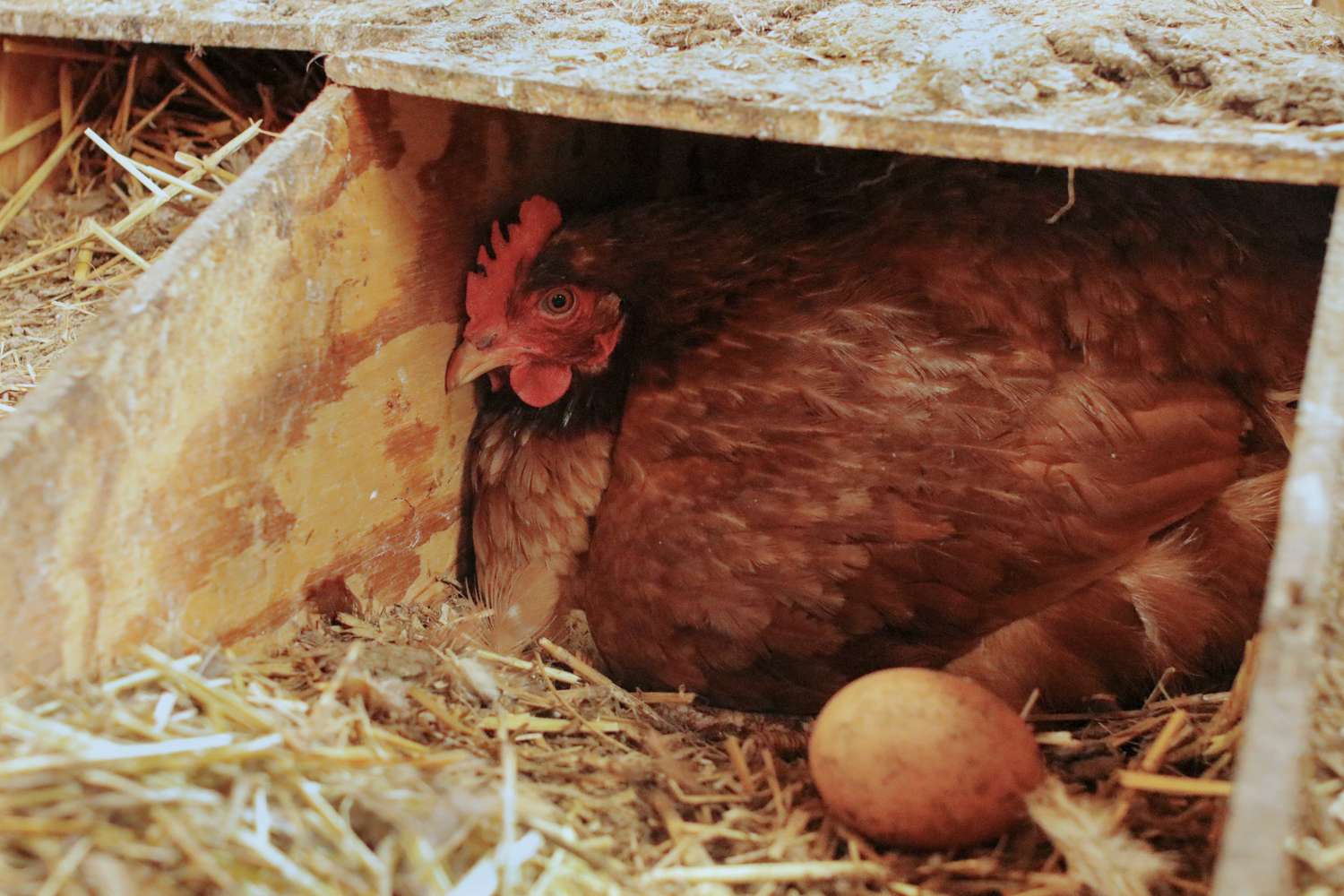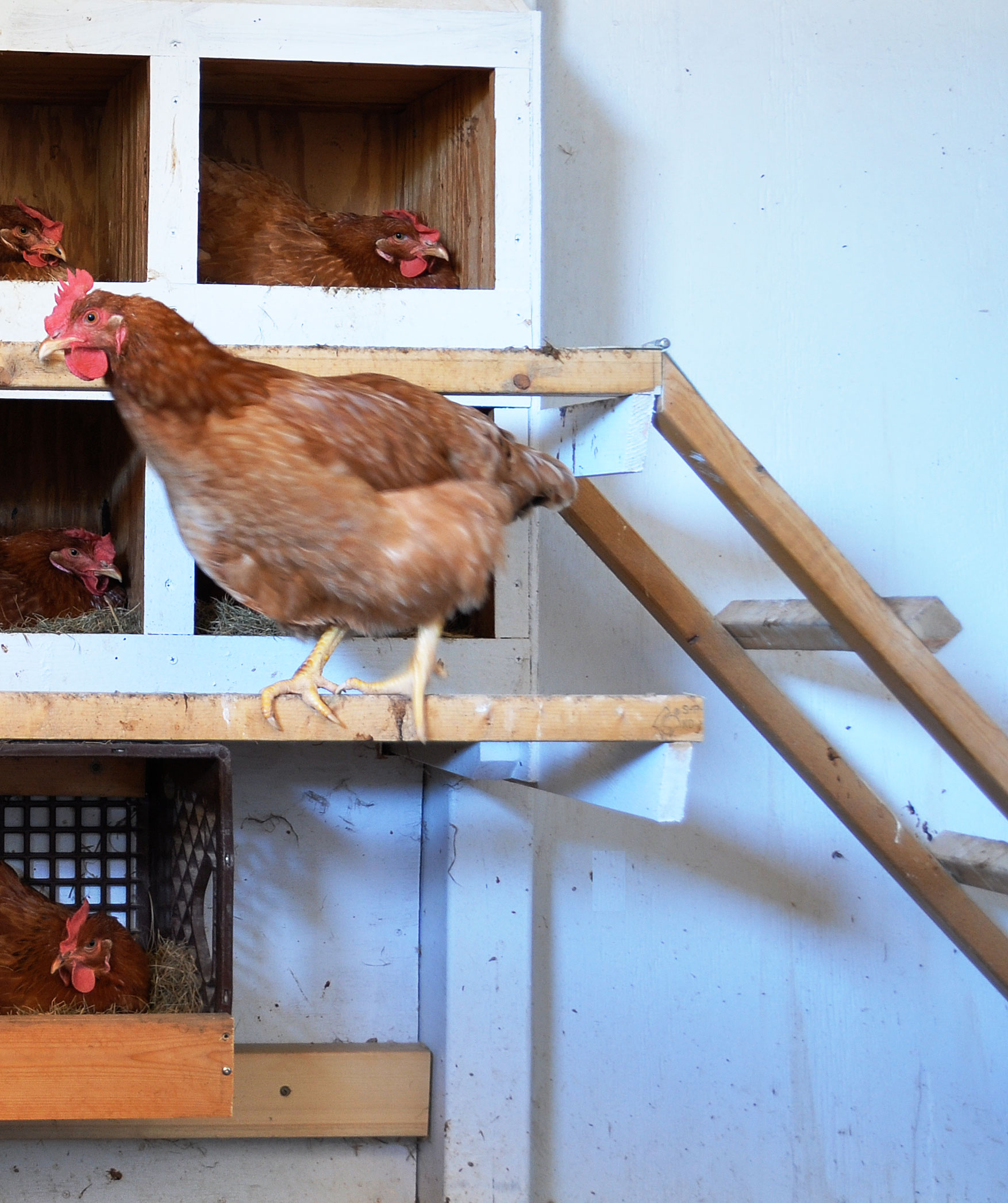Raising chickens is a rewarding experience and one of the most important aspects of chicken husbandry is providing your birds with nesting boxes. If you’re wondering how to get your chickens to use nesting boxes, there are a few simple steps that you can take. By following these steps, you can ensure that your chickens are comfortable, safe, and less likely to lay their eggs in undesirable places. Read on to learn how to get chickens to use nesting boxes in chicken husbandry.
Chicken Husbandry Basics

Nesting Boxes are essential in any chicken husbandry system. Not only do they provide a safe and comfortable space for chickens to lay eggs, but they also help to protect the eggs from predators. The size, shape and material of nesting boxes vary, and there are several factors to consider when selecting the best nesting boxes for your flock.
Housing is also an important part of chicken husbandry. Chickens need to be kept in a warm, dry, and predator-proof environment. Adequate ventilation and space should be provided, and the housing should be regularly cleaned and maintained to ensure the health of the flock.
Feeding chickens is an essential part of chicken husbandry. It is important to provide a balanced diet that meets the nutritional needs of the flock. The diet should include a variety of grains, vegetables, and protein sources such as insects and worms.
Health Care is also an important aspect of chicken husbandry. Regular health checks and vaccinations should be performed to ensure the health of the flock. Parasite control should also be implemented to prevent the spread of disease.
How to Get Chickens to Lay Eggs in Nesting Boxes
Once the basics of chicken husbandry are established, it is important to ensure that chickens use the nesting boxes to lay their eggs. To encourage chickens to use the nesting boxes, provide plenty of bedding material such as straw or hay. Place the nesting boxes in a quiet, dark area of the coop and make sure they are easy to access. Placing treats such as mealworms or treats inside the nesting boxes can also encourage chickens to use them.
Training Chickens to Lay in Nesting Boxes

Choose the Right Nesting Boxes
When choosing nesting boxes for chickens, look for ones that are large enough for the chickens to move around in, and make sure they have a good grip surface. Avoid nesting boxes that are too small, as this can make it difficult for chickens to move in and out of them. Also, make sure the boxes are made of non-toxic materials.
Place the Nesting Boxes in a Preferred Area
Place the nesting boxes in an area where chickens feel safe and secure, such as near a wall or a corner of a room. Make sure the nesting boxes are not in a drafty area, as this can make them uncomfortable for chickens.
Prepare the Nesting Boxes
Fill the nesting boxes with a few inches of soft, dry bedding material, such as straw, wood shavings, or hay. This will give chickens something to nest in and will help keep the eggs clean and dry.
Encourage Chickens to Enter the Nesting Boxes
To encourage chickens to enter the nesting boxes, place some treats such as mealworms or corn inside the boxes. This will give chickens a reward for entering the nesting boxes.
Keep the Nesting Boxes Clean
It is important to keep the nesting boxes clean and free of debris, as this will help keep the eggs safe and healthy. Clean the nesting boxes at least once a week with a mild detergent and warm water.
By following these steps, you can easily train your chickens to lay their eggs in nesting boxes, which will help ensure that your eggs stay healthy and safe. With a little bit of effort and patience, you can get your hens to lay eggs in nesting boxes with ease.
Handling Eggs
Collecting Eggs Frequently
Collecting eggs frequently is a key part of getting chickens to lay in nesting boxes. It is important to collect the eggs as soon as possible to prevent the chickens from reusing the nesting boxes to lay more eggs. Collecting the eggs should be done at least twice a day, preferably more. This will give the chickens the message that their eggs are being taken away and that they need to lay in different boxes.
Refrigerating Eggs
It is also important to refrigerate the eggs after they have been collected. This will prevent them from going bad and will ensure that the eggs are safe for human consumption. The eggs should be kept in a cool and dry place, away from direct sunlight. This will help keep the eggs fresh for longer periods of time and will help get chickens to lay in nesting boxes more regularly.
Frequently Asked Questions
What are the best types of nesting boxes for chickens?
Nesting boxes are essential for chicken husbandry. They serve as a private and comfortable area where the chickens can lay their eggs and rest. The following types of nesting boxes are the best for chickens:
- Wooden nesting boxes: These are the most popular nesting boxes for chickens. They are generally made from wood, and can be placed on the floor, wall or hung from the ceiling. They are usually easy to clean and provide a safe, comfortable place for chickens to lay their eggs.
- Plastic nesting boxes: Plastic nesting boxes are becoming increasingly popular, as they are more durable than wooden boxes and can be easily cleaned. They are also generally cheaper than wooden boxes and can be hung from the ceiling or placed on the floor.
- Cardboard nesting boxes: Cardboard nesting boxes are a good option if you need a cheap, disposable option. They are lightweight, can be easily moved and are a great choice for small flocks. However, they are not as durable as wooden or plastic boxes, and need to be replaced more often.
- Straw nesting boxes: Straw nesting boxes are a great choice for chickens, as they provide a soft, comfortable surface for laying eggs. They are also easy to clean and can be hung from the ceiling or placed on the floor.
When choosing the best nesting boxes for your chickens, take into consideration the size of your flock, your budget and the type of boxes that best suit your chickens’ needs.
How Often Should Nesting Boxes Be Cleaned?
- Monthly: Nesting boxes should be thoroughly cleaned once a month.
- After Each Use: After each egg is laid, the nesting box should be checked for soiled material and if necessary, cleaned.
- After Brooding: After brooding, nesting boxes should be cleaned, as the hens may have scratched and spilled bedding inside.
Nesting boxes should be cleaned regularly to prevent the spread of bacteria and to ensure a clean, safe environment for the hens. Cleaning also removes odors that may discourage hens from laying eggs in the nesting boxes. For best results, nesting boxes should be cleaned at least monthly, after each use, and after each brooding period.
How do I encourage my chickens to use nesting boxes?
To encourage chickens to use nesting boxes, provide boxes that are protected from the elements, are easy to access and have a deep bedding of straw or hay. Place the boxes in a quiet, secluded area with good ventilation. Place a few eggs in the boxes to encourage hens to lay eggs in them. Place treats inside the boxes to reward hens for using them. Make sure to keep the boxes clean and replace the bedding regularly.
Is there a certain time of day when chickens are more likely to use nesting boxes?
Yes. Chickens tend to lay eggs during the morning hours and may be more likely to use a nesting box during this time. Additionally, chickens prefer to lay eggs in a dark, quiet, and private area, so the nesting boxes should be placed in an area that is out of sight from other chickens and other animals.
- Place the nesting boxes in a quiet and private area. This will encourage chickens to use the nesting boxes instead of laying eggs on the ground.
- Ensure the nesting boxes are in a well-ventilated area. This will reduce the chances of the eggs becoming moldy or rotten.
- Make sure the nesting boxes are clean. Chickens prefer to use clean nesting boxes and will be more likely to use them when they are kept clean.
- Provide plenty of bedding material. This will make the nesting boxes more comfortable and inviting for the chickens to use.
- Place the nesting boxes in the same spot each day. This will help the chickens become familiar with the location and will make them more likely to use the nesting boxes.
What should I do if my chickens are not using the nesting boxes?
- Check the Nesting Boxes: Make sure the nesting boxes are clean, dry and free of pests. Place some fresh hay or straw inside the boxes to make them more inviting.
- Provide Privacy: Make sure the nesting boxes are placed in a secluded area, away from foot traffic and other distractions. Add some curtains or a blind to the area to encourage the chickens to feel safe.
- Make Nesting Boxes Appealing: Place some treats such as mealworms or fruit slices in the nesting boxes to entice the chickens to use them. Place some golf balls or eggs in the nesting boxes to imitate real eggs and encourage the chickens to lay in them.
- Keep Other Roost Areas Clean: If the chickens are using other roost areas instead of the nesting boxes, make sure those areas are kept clean and free of pests. This will encourage the chickens to use the nesting boxes instead.
- Provide Adequate Space: Make sure the nesting boxes are large enough for the chickens to use comfortably. If the boxes are too small, the chickens may be reluctant to use them.
Conclusion
Chicken husbandry requires patience and diligence to ensure that your chickens are using their nesting boxes. Providing ample space and making sure the boxes are placed away from potential predators is key. Additionally, offering rewards and keeping the nesting boxes clean and comfortable will help encourage chickens to use them. With consistent effort, you should be able to get chickens to use their nesting boxes.
